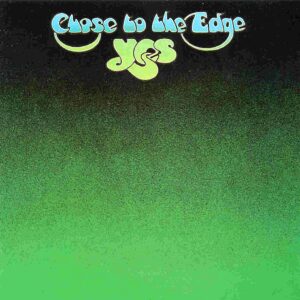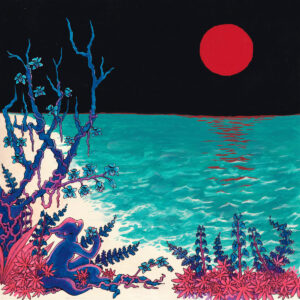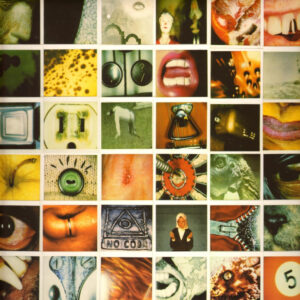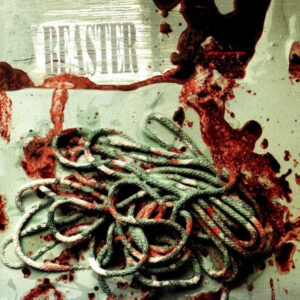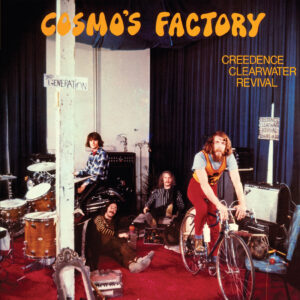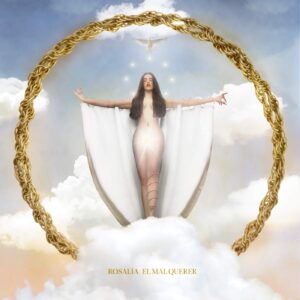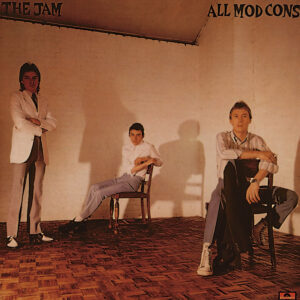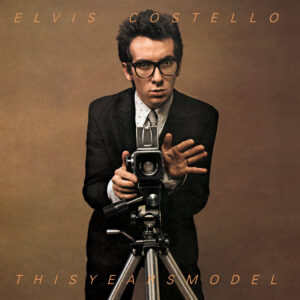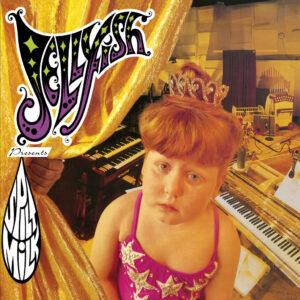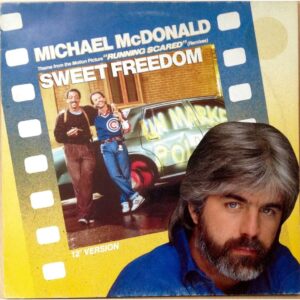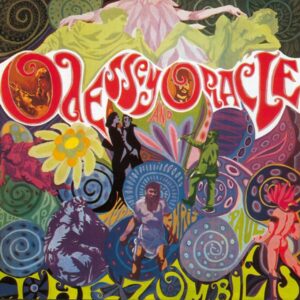
The grandson of a Titanic survivor, Haruomi Hosono was the bassist for the Japanese band Happy End. During a jam session with Happy End, Hosono took a double-sized hit on a joint. The joint was tainted and triggered panic attacks. He healed himself by reading the New Age book The Human Miracle: Transcendent Psychology and listening to exotica musician Martin Denny.
Introduction
Hosono released several albums of exotica, including 1978’s Paraiso, credited to Harry Hosono and The Yellow Magic Band. He wrote down the idea of creating a disco version of Denny’s song ‘Firecracker’ that would sell four million copies. Over onigiri, he showed keyboardist Ryuichi Sakamoto and drummer Yukihiro Takahashi his idea. The trio recorded ‘Firecracker’ – an initial version with live drums didn’t work, but a version with Sakamoto programming a Roland MC-8 was much better.
The record didn’t sell four million copies but successfully launched the Yellow Magic Orchestra career. Coupled with the track ‘Computer Game’, ‘Firecracker’ reached the UK top 20 and sold 400,000 copies in the USA. The band combined the innovations of other electronic pioneers like Kraftwerk and Giorgio Moroder with arcade games, Japanese traditional music, and funk. 1981’s Technodelic was the first album built around samples and loops.
Despite their innovations, YMO’s music is often goofy and fun. The trio made seven albums between 1978 and 1983, before reforming for 1993’s Technodon. Yellow Magic Orchestra were influential worldwide and massively popular in Japan – Hosono told The Guardian that teenage girls “would literally chase us down the street and rip our clothes to shreds.”
The members of the Yellow Magic Orchestra are well-connected to the Japanese music scene – all three were experienced musicians before they formed the band. Sakamoto was married to popular vocalist Akiko Yano and won a Grammy for his score for 1988’s The Last Emperor. Takahashi started his career as the drummer for the Sadistic Mika Band, and all three members have extensive solo discographies.
There’s a huge universe of Yellow Magic Orchestra-related projects – Hosono and Takahashi released albums together in the 21st century as Sketch Show.
Yellow Magic Orchestra Album Reviews
Yellow Magic Orchestra

1978/1979, 8/10
The members of the Yellow Magic Orchestra were busy with various projects in 1978. Hosono released both Paraiso and Cochin Moon. Sakamoto released his solo album, The Thousand Knives of Ryuichi Sakamoto, and co-produced Takahashi’s debut album Saravah! – all three members guest on each others’ projects. The most successful project, however, stemmed from Hosono’s idea of a quickly-recorded electronic cover of Martin Denny’s ‘Firecracker’. The trio became a proper working band, and ‘Firecracker’ was an international hit.
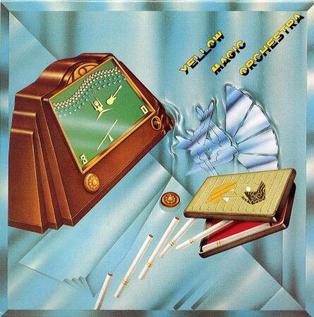
The band pioneered the use of the Roland MC-8 Microcomposer, programmed by Hideki Matsutake. This opened up previously unheard sounds. Where other synth-pop from the early era of the genre sometimes sounds thin, Yellow Magic Orchestra have rich arrangements stuffed with interesting textures that stand up to repeated listens, while Matsutake’s drum programming is less rigid than many synth-pop acts and swings a little. There are two different versions of the album – the 1979 US version is reviewed here, remixed by Al Schmitt, dropping the brief Hosono tune ‘Acrobat’ off the end of the record.
Each side of the LP opens with short tracks derived from the bleeps of arcade games. They set a tone that makes the rest of the LP look more gimmicky than it actually is. The rest of the record is more eclectic. ‘Simoon’ is more of the exotica that Hosono was exploring on his contemporary records, The disco cover of ‘Firecracker’ is the triumph that Hosono envisaged, while ‘Cosmic Surfin” mines similar territory, bringing an Asian melodic sensibility to electronic music. ‘Yellow Magic (Tong Poo)’ is another key track with sounds derived from the music made during the Chine Cultural Revolution.
Yellow Magic Orchestra is a successful and influential debut. Envisaged as a casual side project, it became the main focus for Hosono, Sakamoto, and Takahashi for the next few years.
Solid State Survivor
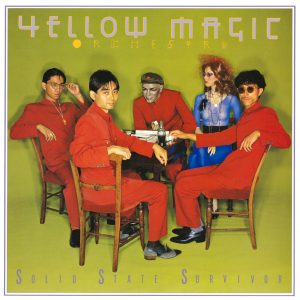
1979, 9/10
Yellow Magic Orchestra’s debut was successful, but a little gimmicky. On their sophomore album, they refine their sound to the sophisticated synth-pop that they’re best known for. Curiously, Solid State Survivor wasn’t released in the US until 1992, although some tracks were released on the US version of 1980’s X∞Multiplies. It’s strange, as it’s one of the band’s most international-friendly albums, with all of the song titles and lyrics in English. Producer Quincy Jones admired ‘Behind the Mask’ and persuaded Michael Jackson to record it for his 1982 mega-album Thriller. Jackson’s version, with added lyrics, was shelved over a disagreement over royalties, and didn’t emerge until 2010.
‘Behind the Mask’, which Sakamoto originally wrote for a Reiko watch commercial, is the best-known original. Takahashi’s ‘Rydeen’ is another very memorable instrumental, while ‘Technopolis’ helped to shape the emerging genre of techno. There’s also an oddball synth-pop cover of The Beatles’ ‘Day Tripper’, while the title track is a strong closer.
Yellow Magic Orchestra’s second album is a triumph, refining their sound into a synth-pop juggernaut.
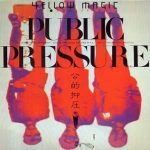
Public Pressure
1980, not reviewed
Yellow Magic Orchestra’s first live album went to #1 on the Japanese charts. The band are supported by synth technician Hideki Matsutake and Akiko Yano.
X∞Multiplies

1980, 6/10
Yellow Magic Orchestra’s third album has markedly different editions. The Japanese edition is comprised of half new songs and half of skits, the latter performed by the Snakeman Show, labelmates of Yellow Magic Orchestra. Integrating skits into albums became popular in 1980s and 1990s hip hop; to the best of my knowledge X∞MULTIPLIES is the first album with multiple skits. It’s hard for skits to hold up to multiple listens but they fit thematically, following YMO’s tendency to poke fun at Western stereotypes of Japan.
The American and European versions are compilations, with older tracks mixed with songs from the Japanese version of X∞MULTIPLIES. As a fan, none of these versions is satisfactory for repeated listening – a homemade EP-length playlist with all the new songs from the Japanese version is the ideal solution, and it’s the edition I’m reviewing here.
The new songs on Multiplies are closer to American new wave than before. There are prominent guitars on ‘Nice Age’ and ‘Citizens of Science’, and they’re not too distant from The Cars. Aside from those tracks, there’s also a hilariously demented take on Archie Bell’s ‘Tighten Up’ and the surf guitar of the title track.
With its skits and paucity of new music, Multiplies is more like a glorified EP than a full album but it’s worth hearing its new songs.
BGM
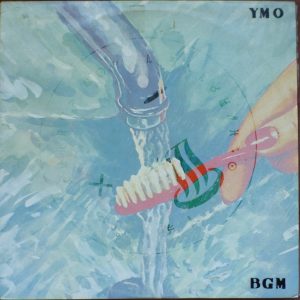
1981, 8.5/10
The title of Yellow Magic Orchestra’s fourth album stands for “background music”, although press advertising also used the alternate title “beautiful grotesque music”. Where previous Yellow Magic Orchestra albums were restlessly eclectic, BGM focuses on electronic sounds, echoing the work of Kraftwerk or Berlin-era David Bowie. It was the first album to feature several pieces of technology – the Roland TR-808 drum machine and the Roland MC-4 Microcomposer. Sakamoto clashed with Hosono while making the record and was often absent from the sessions – two of his songs are recycled from previous projects. English-born DJ Peter Barakan helps with lyrics, as well as assisting with international marketing.
BGM starts with its most accessible track, Takahashi’s ‘Ballet’, and ends with the most experimental, ‘Loom’, written by Hideki Matsutake, with its sweeping soundscape. It’s the reworked version of ‘1000 Knives’, previously the title track of Sakamoto’s 1978 solo album, that’s the standout on BGM. It’s structured like jazz, with a series of improvisations that return to a memorable central theme. Takahashi and Hosono co-wrote ‘Cue’, the song that evokes Bowie’s Berlin trilogy.
BGM is an impressive Yellow Magic Orchestra record, the trio excelling in their focus on electronic music.
Technodelic

1981, 7.5/10
If BGM emphasised the electronic aspects of Yellow Magic Orchestra’s music, their second album of 1981 goes even further. Technodelic is often minimalist and austere, and it was the first album built around sampling and looping. It used the custom-built LMD-649 sampler, most notably on ‘Seoul Music’, where the short looped vocals (“paa”, “fuku”, “chiki”) are used as percussion.
Due to its colder textures, Technodelic isn’t my favourite Yellow Magic Orchestra album. Almost the only hint of the group’s usual goofiness comes from the opening lines of the record – ‘Pure Jam’ starts with “this must be the ugliest piece of bread I have ever eaten”. The tone of Technodelic is set by atmospheric instrumentals like ‘Light In Darkness’, ‘Prologue’, and ‘Epilogue’. The single ‘Taisō’ is a welcome relief, bringing a looser sound – other upbeat tracks like ‘Key’ and ‘Stairs’ are tense and tightly wound.
A second album from 1981, Technodelic is impressive, but I find it harder to warm to than other Yellow Magic Orchestra records.
Naughty Boys
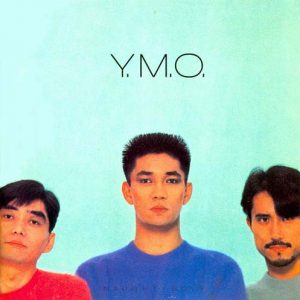
1983, 8/10
The evolution of the Yellow Magic Orchestra between 1978 and 1983 is astounding. After pioneering sampling and looping on Technodelic, they changed gears to a song-based electropop record for Naughty Boys. It’s amazingly radio-friendly by the group’s previous standards. It opens with the warmth of the #2 hit ‘Kimi Ni Mune Kyun’, with smooth harmonies and lyrics that translate as “for you, my heart goes boom”. Be-Bop Deluxe’s Bill Nelson plays guitar, adding to the more mainstream sound. Naughty Boys has also been issued in an instrumental version, with a slightly different tracklist and extra synth parts taking the vocal lines.
It’s fun hearing the group bring their artistic sensibility to commercial pop music. With its horns, Takahashi’s ‘Opened My Eyes’ is surprisingly analogous to the R&B/pop of Van Morrison. Hosono’s ‘Lotus Love’ recalls the exotica that he launched the band’s career with. Unusually, there’s a 30-second snippet of ‘You’ve Got To Help Yourself’ – one of the band’s best tracks, it would be featured in full on their next record.
Naughty Boys is the polar opposite of the stark and experimental Technodelic, the group convincingly embracing mainstream pop music.
Service
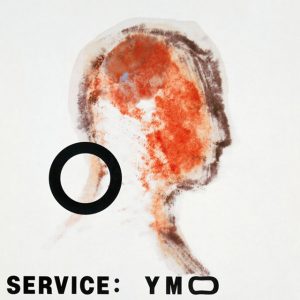
1983, 8/10
Like 1980’s Multiplies, the final album of Yellow Magic Orchestra’s initial tenure alternates skits with songs. As with Multiplies, it’s best to make a playlist of the actual songs – there are commercial editions with just the songs. Even without the skits, Service feels substantial, running over half an hour. Even more than Naughty Boys, it’s a mainstream album somewhere like a Japanese crossover point between David Bowie, a-ha, and Duran Duran. While experimental bands heading toward the mainstream can have mixed results, Yellow Magic Orchestra have enough personality and musicality that Service works beautifully, even though the group were winding down by this point.
In particular, ‘You’ve Got to Help Yourself’ is one of the group’s most accessible and memorable songs, built around a great synth riff. Sakamoto’s dreamy ‘Perspective’ and Takahashi’s moody ‘Chinese Whispers’ are other examples of the group thriving in the 1984 mainstream.
Service is the final record from Yellow Magic Orchestra’s initial tenure. Despite its weird format, the group certainly weren’t running out of ideas.
Technodon
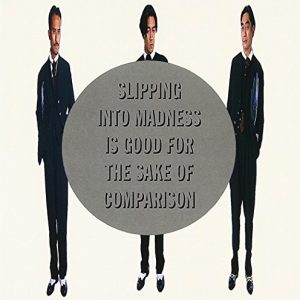
1993, 5.5/10
Yellow Magic Orchestra didn’t officially break up after Service. Instead, they used the term “sankai”, which means “spread out”, with each member pursuing their own interests. The trio reunited in 1993 for Technodon, although because their name was owned by their former record label, they released the album under the alias YMO. If their initial tenure chronicles a restless and wide-ranging journey, this final album is a dry and unsatisfying appendix. The group were cited as an influence by techno bands, and Technodon is a straightforward techno album that lacks the band’s pioneering spirit.
It’s competent, but as with many early 1990s albums, it’s overlong – most of the tracks drag on over five minutes and only a handful are ear-catching. ‘Waterford’ is funky and the vocal samples are engaging. The closing ‘Pocketful of Rainbows’ is taken from the 1960 Elvis Presley movie G.I. Blues, and YMO tackling a show tune provides the quirkiness you’d expect from the group. William S Burroughs is sampled on the opening ‘Be A Superman’, while he’s more extensively featured on ‘I Tre Merli’.
Technodon is respectable, but it’s disappointingly bland from a usually fascinating ensemble.
10 Best Yellow Magic Orchestra Tracks
Related Pages
About
Aphoristic Album Reviews is almost entirely written by one person. It features album reviews and blog posts across a growing spectrum of popular music.
Review Pages
Read about the discographies of musical acts from the 1960s to the present day. Browse this site's review archives or enjoy these random selections:
Blog Posts
I add new blog posts to this website every week. Browse the archives or enjoy these random selections:





